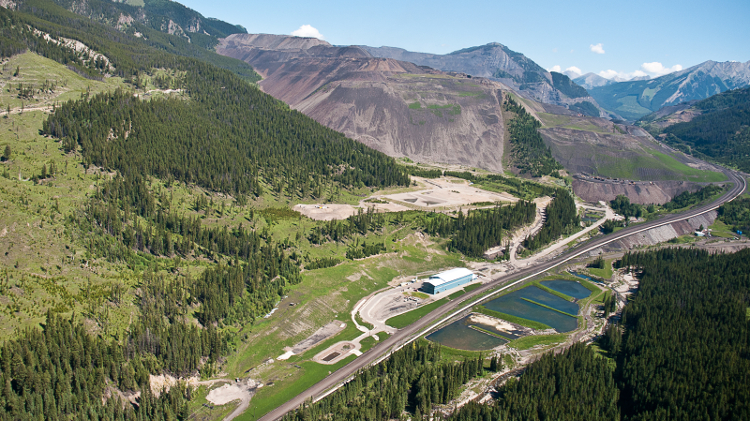Finance Minister Bill Morneau delivered the federal budget on March 22, which included the long-promised Canada Infrastructure Bank to fund transit plans, transportation networks and electricity grids. Courtesy of the Office of the Prime Minister of Canada
Canada’s leading mining and minerals associations welcomed initiatives outlined in the federal budget, delivered on March 22 by finance minister Bill Morneau. These include a one-year extension of the Mineral Exploration Tax Credit (METC) with its flowthrough share mechanism intact, pledges for infrastructure in remote northern areas, and continued support for skills and employment training for indigenous Canadians.
Budget 2017’s policies are a “potential turning point” for an industry marred in recent years by a loss of competitive edge when it comes to mineral investment, according to Brendan Marshall, vice-president for economic and northern affairs at the Mining Association of Canada (MAC). However, he said much depends on “the shape [these programs] take” and hopes the specifics, eligibilities and mechanisms of the funds will be outlined as quickly as possible.
In particular, MAC would like to see the government elaborate on infrastructure promises set out in the budget, which include the establishment of a new Canada Infrastructure Bank. MAC is hopeful that the bank, which promises $35 billion over 11 years in transit plans, transportation networks and electricity grids, will specifically address and alleviate the challenges mining companies face in remote and northern areas.
Prospectors and Developers Association of Canada (PDAC) president Glenn Mullan said he also hopes the infrastructure bank will help “unlock the resource potential” of remote areas. PDAC’s figures show that the costs to develop and explore in northern and remote Canada are, on average, 227 per cent higher than non-remote projects, sometimes soaring to 600 per cent more.
A key victory for exploration companies across the country is the extension of the METC for another year. Gavin Dirom, outgoing president of Association for Mineral Exploration British Columbia (AME BC), said the decision to extend the tax credit shows “a level of support and understanding” for the mineral exploration sector. He said he is hopeful it will help “restore Canada’s place as the top destination for investment and mineral exploration.”
The METC is a 15 per cent nonrefundable tax credit which incentivizes investment in junior exploration companies. Its flow-through shares mechanism allows companies to transfer expenses associated with exploration activities to investors, who can deduct the expenses in calculating their own taxable income. Major discoveries at the Ekati and Diavik diamond mines in the Northwest Territories, the Voisey’s Bay nickel mine in Labrador, and the Éleonore gold mine in James Bay were all made with flow-through-shares financing.
The budget has a heavy focus on innovation, including the establishment of a new platform called ‘Innovation Canada,’ which will co-ordinate and simplify support available to Canadian entrepreneurs and review current innovation programs, including those at Natural Resources Canada (NRCan). The scheme will benefit from $950 million over five years.
Over four years $200 million will be allocated to NRCan and the departments of Agriculture and Fisheries and Oceans to invest in clean technologies being developed by industry, academia and federal labs. NRCan spokesperson Roxanna Coulon said that investments in the mining sector will focus on innovations and clean technologies that will ensure “mineral resources are developed sustainably while strengthening our competitive advantage.”
According to MAC, the mining industry has historically felt under-represented in the Canadian innovation, research and development (R&D) ecosystem relative to its economic contribution. The association therefore hopes that the Canadian Mining Innovation Council (CMIC) will be a recipient of the proposed funding for innovation and R&D. CMIC is a collaboration between industry leaders, including MAC members, government and academics which aims to stimulate technological innovation that will transform mining into a zero-waste industry over 10 to 20 years.
Mining is Canada’s leading private sector employer of indigenous people and MAC, PDAC and AME BC were in agreement that the budget’s $50 million investment into the Aboriginal Skills and Employment Training Strategy (ASETS) program bodes well for the sector. PDAC’s Mullan added the boost may also enhance indigenous participation by “breaking down some of the barriers that inhibit more active participation.”
The $50 million figure designated for ASETS is in part recycled from preexisting funds. It incorporates $15 million earmarked for the same program over two years in Budget 2016, plus funds re-allocated from other skillstraining programs.
The government also outlined its intent to have carbon pricing in place across the country by 2018. Provinces and territories will choose between a direct price on carbon pollution and a cap-and-trade system. While Marshall said that MAC supports the move “in principle,” he thinks the government should ensure that emissions-intensive industries are “protected” and do not bear the carbon price in a “punitive way.”
Other areas of note for miners in the budget include funding for workintegrated learning programs for post-secondary students enrolled in science, technology, engineering, mathematics and business programs, a $50-million commitment to establish a Canadian Centre on Transportation Data and an associated open data portal which will serve as an authoritative source of transportation data designed to move goods more efficiently across supply and distribution chains. A National Trade Corridors Fund will address congestion in the transportation supply chain and is aimed to unlock economic development in the territories and improve the flow of supplies to their most northern communities.
The government also earmarked $30 million for remediating orphaned oil and gas wells in Alberta.




